Does Web Accessibility Have a Positive Impact on SEO?
Conducted in conjunction with SEMrush and BuiltWith, we created a detailed report to outline whether accessibility has a positive impact on SEO.
Needless to say, the results were interesting and conclusive, with the study showing a clear connection between web accessibility compliance efforts and the impact on search engine optimization.
However, don’t take our word for it, have a look at the stats yourself.
Summary of Our Findings
If you’re short on time and don’t wish to go through the entire study, here’s the main findings:
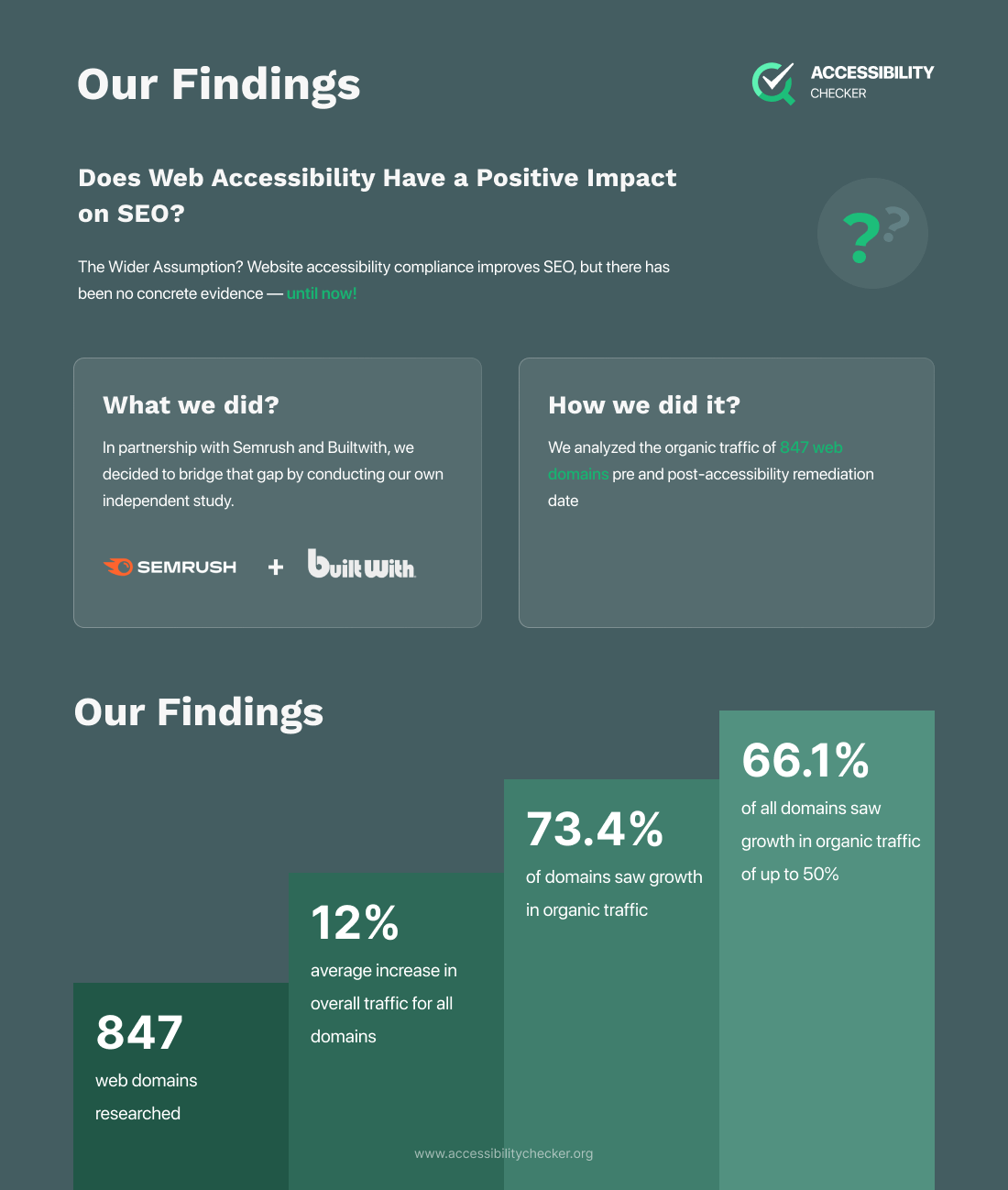
One sentence summary of our findings: Our analysis revealed a 12% average increase in overall traffic across the domains examined.
And now, let’s delve deeper into the process that led us to these findings.
The Assumption
Search engines seek the best results for their guests. They’re like internet concierges.
So if accessible websites are the easiest to understand and use, the claim that search engines should recommend accessible pages over inaccessible ones isn’t a big stretch.
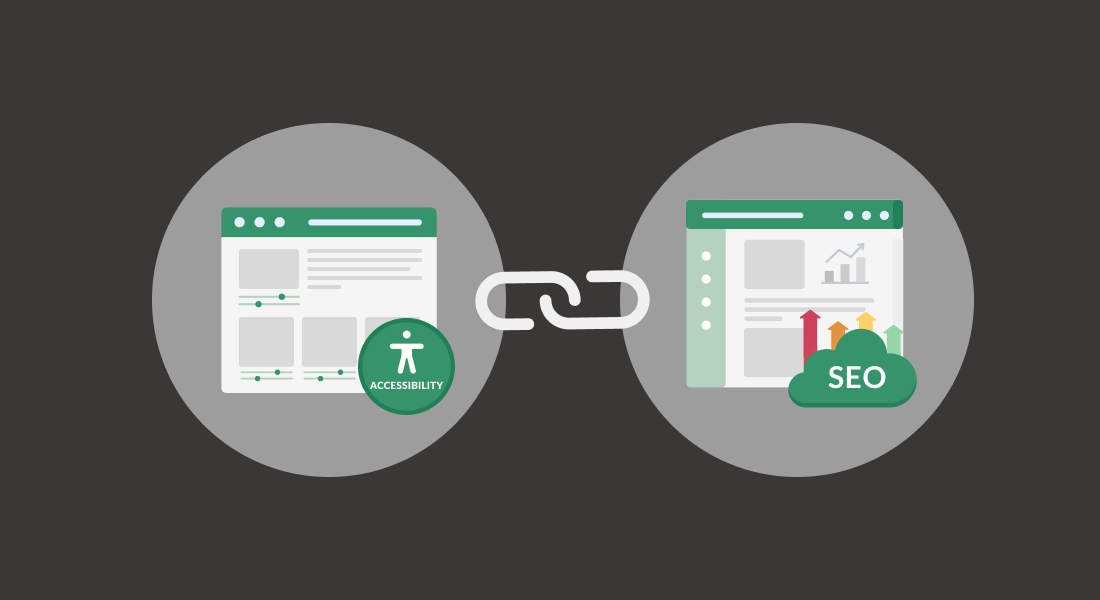
Many believe that web accessibility and SEO go hand in hand (1). This isn’t news.
But there’s no hard evidence.
And even though we don’t really need empirical proof to point out all the ways making your website more accessible is a must-do, backing it up with hard numbers can help you gain the executive buy-in you might need to make it happen.
The Purpose of the Study
The invitation to follow web accessibility guidelines often arrives as a lawsuit. Not fun.
Maybe it’s harder to imagine the accessibility challenges of a digital environment.
Or rather, how little effort it takes to accommodate differently-abled users.
Either way, we can do better to put ourselves in others’ shoes.

We already do it for our marketing campaigns—as we seek to understand our audience and use that knowledge to create compelling copy.
But even the best marketing comes across as hopelessly ignorant if visitors can’t actually get to it.
That’s not all.
Rumour has it that responsible, kind, considerate websites win more traffic.
Go figure! (And figure we did.)
Because, in a data-driven culture, numbers influence decisions.
These findings should nudge website owners to adopt accessibility practices without hesitation.
Why is website accessibility so important?
Website accessibility provides equal access to those with disabilities, improves the overall user experience for everyone, and helps businesses comply with the Americans with Disabilities Act (ADA).
Accessibility and SEO: The story so far
- Accessible websites are easier for search engine crawlers to index, meaning that your site is more likely to appear in search results.
- Accessible websites provide a better user experience, which can lead to higher engagement rates and longer time on site. These are both factors that search engines take into account when ranking websites.
- Accessible websites are more likely to be shared since users can easily recommend them to friends or followers. This can help to increase your site’s reach and visibility.
What are we trying to find out?
Whether on average, websites that become accessible improve their SEO and, as a result, increase their organic traffic.
What do we need to prove the point?
We need to test the impact of accessibility software on a large sample of websites.
First, we need a large sample of accessibility-optimized websites.
Enter: BuiltWith
BuiltWith is a website that allows you to determine which technology a website uses. It’s a handy tool for developers who want to learn new frameworks or libraries to build on.
For example, the website BuiltWith.com tells you that Facebook uses Django, PHP, CSS, JQuery, and Apache, among other technologies.
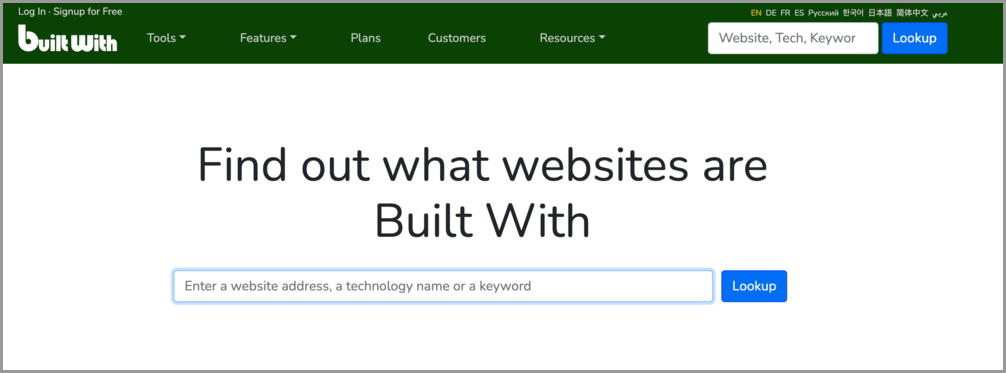
We exported from BuiltWith a list of 800+ domains using website accessibility remediation technologies and the date on which the technology was first identified on each domain.
The list of website accessibility remediation technologies we checked for includes some of the leading house names in the industry:
- accessiBe
- eSSENTIAL Accessibility
- Accessible360
- Level Access
- User1st
- UserWay
Next, we need to check these technologies’ impact on organic traffic.
Enter: Semrush
Semrush is a leading online visibility management SaaS platform that enables businesses globally to run search engine optimization, pay-per-click, content, social media and competitive research campaigns and get measurable results from online marketing.
- It provides online visibility data to businesses of all sizes.
- It gives us a place to start when planning new keyword campaigns or refining existing ones, and its analytics tools help uncover the most effective keywords to target in both organic and paid search campaigns.
- It also provides competitive intelligence to help us find new competitors and identify areas where our clients may be vulnerable.
We took that list of domains from BuiltWith and their accessibility remediation date (when they launched accessibility software) and exported the organic traffic from Semrush’s API developer hub.
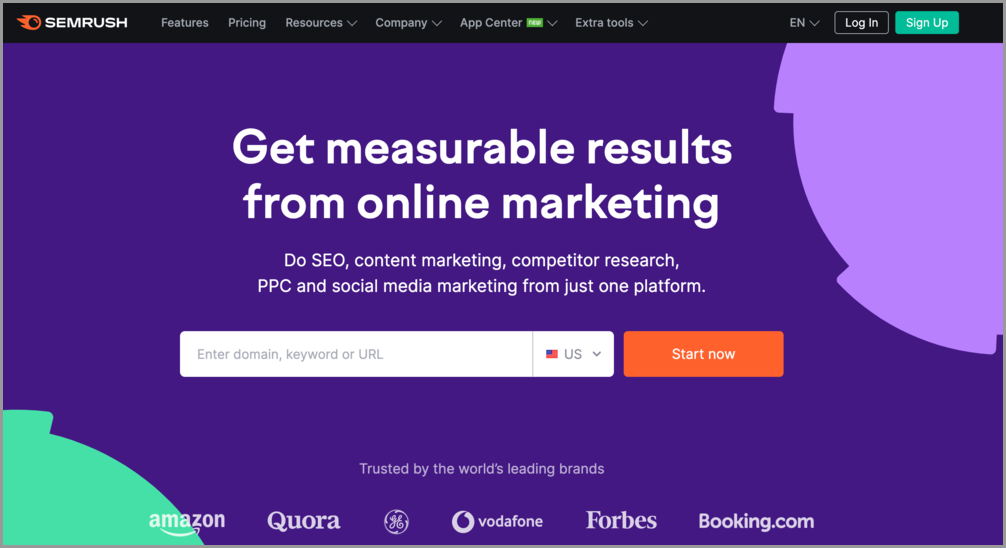
Semrush gave us the organic traffic three months before the accessibility remediation date (referred to as “Pre”) and the organic traffic three months after the accessibility remediation date (referred to as “Post”).
Data Sources in Numbers
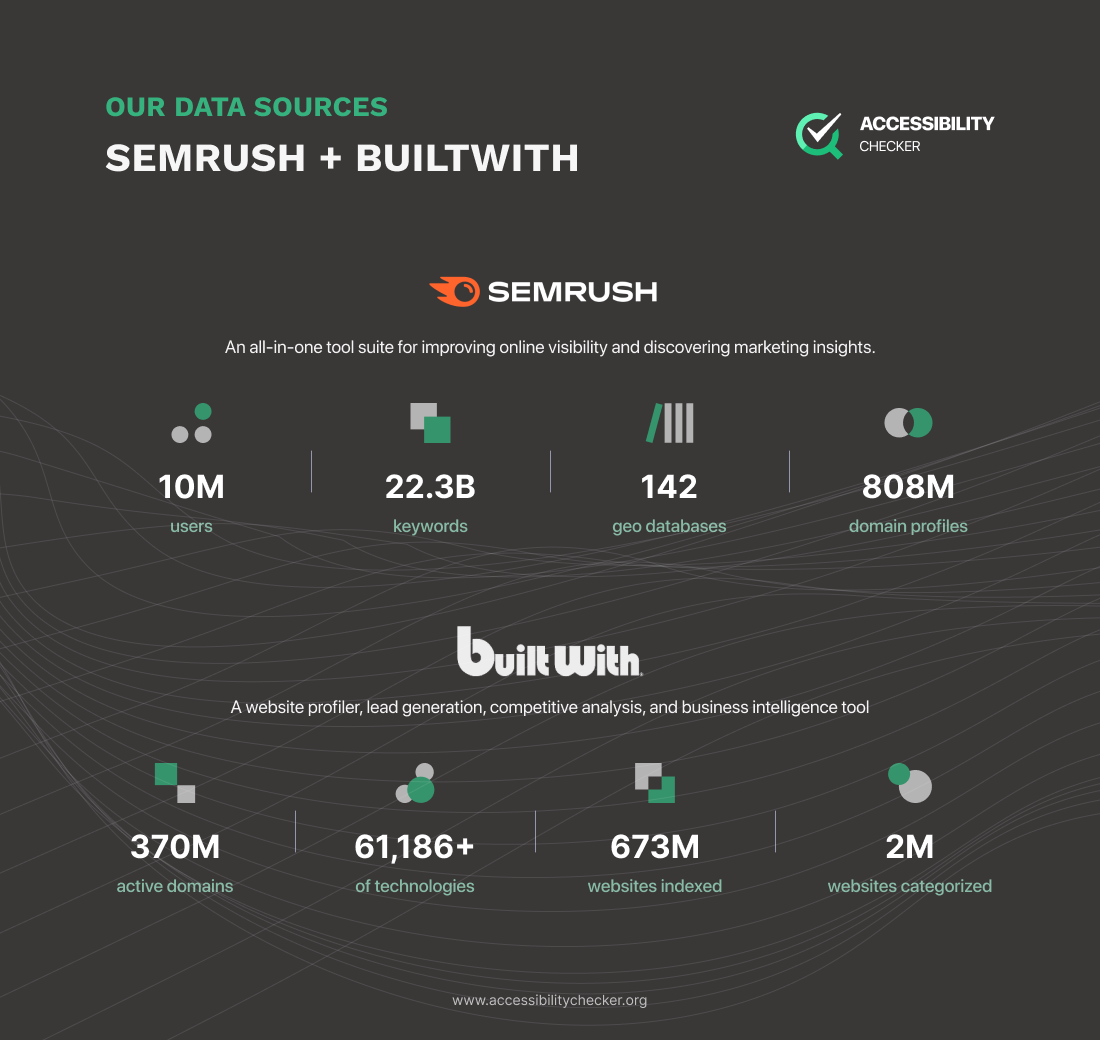
Finally, we need someone who understands all this data stuff.
Introducing Data Scientist Ph.D. Jacek Szandula
For each domain, Jacek (2) calculated an average change in data from the values, or more precisely by comparing the averages of the PRE and POST values for each domain.
Relative to AvgD,T =AvgD,T/AvgD
- Relative to AvgD,T is the scaled value for Domain and Time (PRE or POST)
- AvgD,T is the average for Domain and Time (PRE or POST)
- AvgD is the average for Domain
Once the average change in organic traffic was ready, Jacek used an R model to make sure that the distribution of change across the 847 domains makes sense – meaning that there isn’t a few domains with huge changes in organic traffic between Pre and Post, which are drastically affecting the entire “average” change.
Simply put: Jacek analyzed the data to see whether there was an increase in organic traffic after a website becomes accessible and compliant.
Spoiler alert: there was an increase.
Summary of the Main Results
- On average, the 847 domains we analyzed increased their organic search traffic by 12% following the installation of an accessibility solution.
- 26.6% of the analyzed domains decreased in traffic following the installation of an accessibility solution…
- But.. the remaining 73.4% had an increase in organic traffic following the installation of an accessibility solution.
- 66.1% of all domains saw an increase of up to 50% in their monthly organic traffic following the installation of an accessibility solution.
- We decided to publish the data gathered and our analysis of these important findings. Here’s a link to the (obscenely complex) spreadsheet.
Additional analysis points
Here’s a breakdown of the changes in organic traffic for the web domains we analyzed
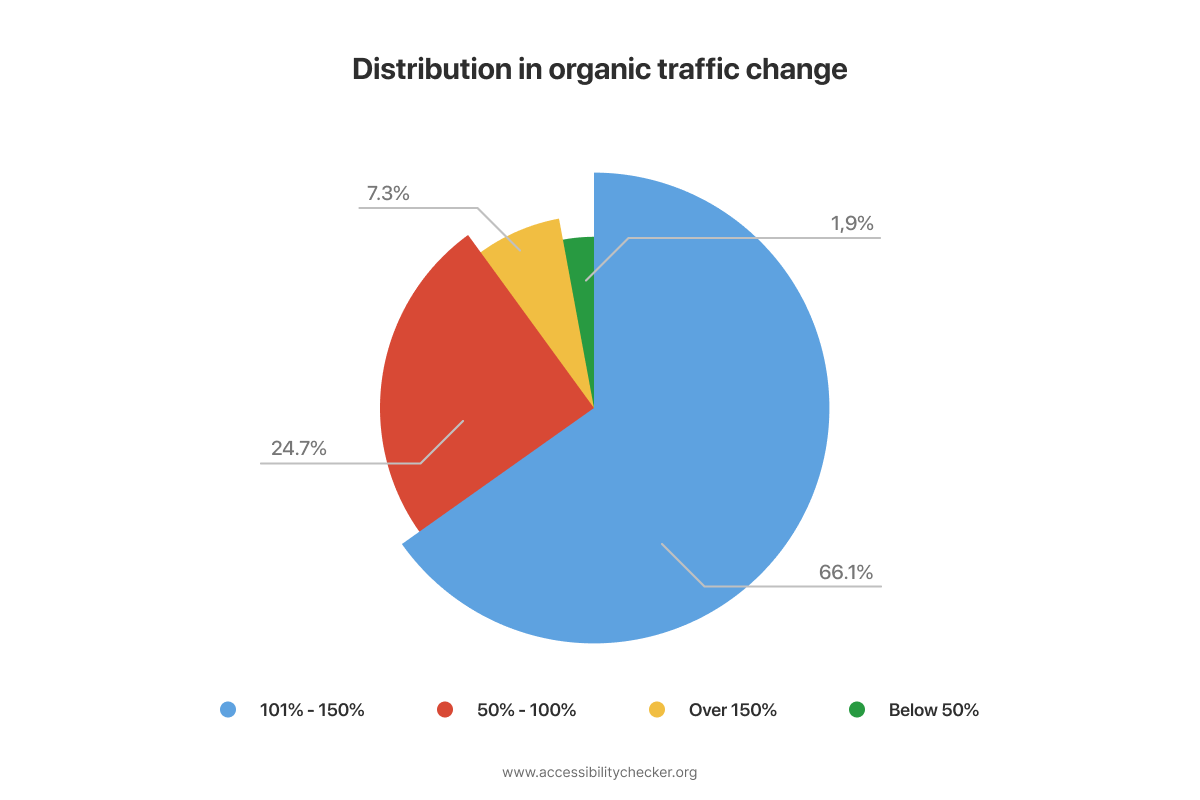
Here’s a breakdown of the average increase in organic traffic following the installation of an accessibility solution broken down by different accessibility solutions.
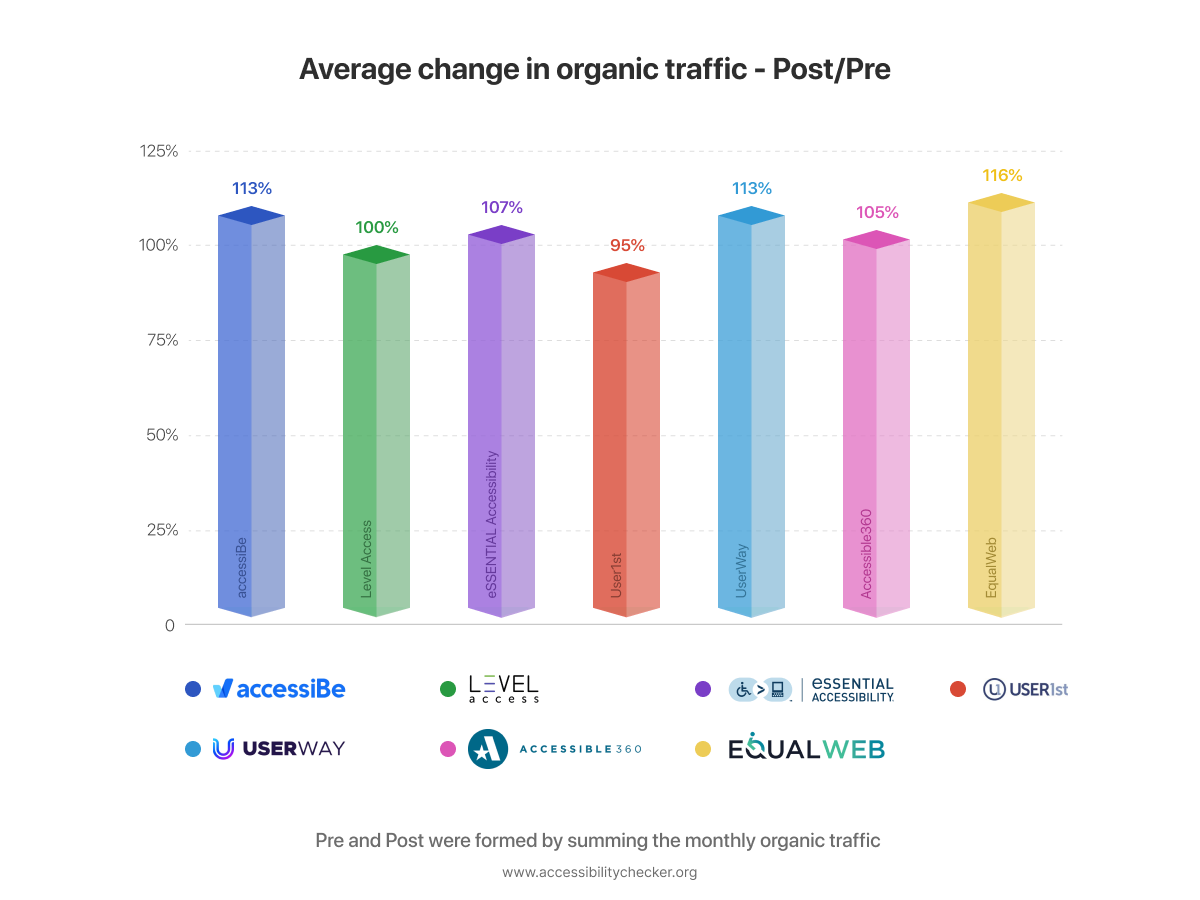
A list of disclaimers to consider while reading the findings
*It’s almost impossible to be 100% certain of the results.
**Many factors can affect the results of a study, including the sample size, the method of data collection, and the way the data is analyzed.
***Even if a study is well-designed and well-executed, there is always the possibility that the results could be more accurate. For example, larger sample sizes and studies conducted over years instead of months.
Disclaimer: This research is an independent research. We did not communicate or shared this study with any of the accessibility remediation companies.
Seasonality
Each one of the domains we checked installed the accessibility solution at a different time of year. Therefore, each domain’s PRE and POST periods differ.
Some periods tend to get more organic traffic than others due to seasonality. There was a different pre and post-test period because of the seasonality of each domain.
- Low volume of data. To make the research 100% significant, we would have had to analyze millions of websites. We could not do it.
- The number of domains per accessibility provider is not the same. We ran into issues getting the same amount of domains per provider, which might affect the consistency of the difference in the results when broken down per provider.
- Natural growth in organic traffic over time. There may be natural growth in organic traffic over time that affects pre & post-organic change. To try and eliminate that risk, we checked the month-over-month growth within the pre & post-periods.
- Number of domains in the research. The domains we researched were exported randomly from BuiltWith and were not chosen specifically. From Semrush, we received API credits to export organic search traffic data that were sufficient to examine 847 domains, and thus the number of domains.
When you make your site accessible, you make it easier for everyone to use. This includes people with disabilities, people with slow internet connections, and people using mobile devices.
Making your site accessible can help you rank higher in search engine results. It can also help you get more traffic from social media and other sources.
In the primitive days before this study, we had no data to back up these claims regarding organic traffic. But after examining the impact accessibility solutions have on 800+ websites, we now do.
We hope this study spreads awareness about website accessibility. Not just for the benefit of website owners increasing their traffic but for the vast population of users alienated from the internet by design.
How to begin your digital accessibility journey?
We recommend the following steps:
#1 – Educate yourself on web accessibility. We recommend beginning with the beginner guide to web content accessibility guidelines (WCAG) and the definitive guide to ADA Compliance.
#2 – Check the color contrast of your website’s code using our free color contrast web app.
#3 – Learn where your business is vulnerable and what you need to change to make your website accessible using our free accessibility checker. Just type the URL you want to check below.
#4 – Awareness is always the first step in any big change. Help us spread the word by sharing this study.


